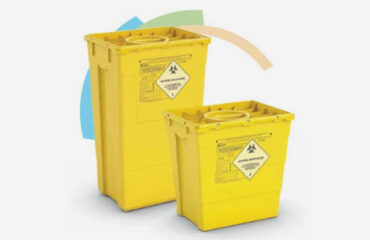What Does Reclaim Waste Do?
Table of ContentsA Biased View of Reclaim WasteWhat Does Reclaim Waste Mean?An Unbiased View of Reclaim Waste9 Easy Facts About Reclaim Waste DescribedThe 9-Second Trick For Reclaim Waste
Explore the kinds, incidents, and kinds of fluid waste. Domestic sewer waste refers to the waste and items from a household septic system. This type of waste is produced by humans in residences, schools, and various other buildings. This only consists of septic systems that have a drainpipe area. The appropriate administration and disposal of domestic sewer waste require fluid waste to be moved to a sewage therapy plant where the proper techniques and equipment are put on purify and deal with waste.
Commercial waste typically consists of possible hazards, such as flammable products or a combination of liquid and solid waste products, and needs an advanced and comprehensive disposal procedure. The disposal of business waste generally includes the purification of waste before transportation to guarantee secure and proper disposal. Hazardous waste is developed from results and drainage of commercial procedures and manufacturing.
This kind of waste can not use the exact same sewage administration transport or procedures as septic or business liquids. The commercial waste administration procedure needs the examination and testing of liquid waste before it goes through the disposal procedure (liquid waste disposal). Runoff waste is the fluid waste that originates from overflow and excess stormwater in extremely inhabited areas or cities
Runoff waste can cause contamination and flooding if not taken care of appropriately. Making sure proper waste monitoring can protect against calamities and lower environmental harm.
8 Easy Facts About Reclaim Waste Shown
Call PROS Solutions today to find out about our waste monitoring and disposal services and the appropriate means to care for the fluid waste you generate.
(https://profile.hatena.ne.jp/reclaimwaste1/)Do you understand what happens to your water when you disengage, flush the commode or drain the cleaning device? No? Well, it deserves understanding. This so-called 'wastewater' is not just an important source yet, after treatment, will certainly be launched to our land, waterways or the ocean. Used water from bathrooms, showers, bathrooms, kitchen sinks, washings and commercial processes is called wastewater.

water utilized to cool down machinery or tidy plant and equipment). Stormwater, a kind of wastewater, is runoff that streams from farming and urban areas such as roofing systems, parks, yards, roadways, paths and seamless gutters into stormwater drains pipes, after rain. Stormwater flows neglected directly to neighborhood creeks or rivers, eventually reaching the sea.
Reclaim Waste - The Facts
In Queensland, many wastewater is dealt with at sewage therapy plants. Wastewater is moved from residential or commercial websites via a system of drains and pump terminals, known as sewerage reticulation, to a sewer therapy plant.
The Department of Natural Resources recommends city governments about handling, operating and keeping sewerage systems and treatment plants. In unsewered areas, neighborhood federal governments might need homeowners to set up individual or household sewer therapy systems to treat domestic wastewater from toilets, kitchen areas, washrooms and laundries. The Division of Natural Resources authorises making use of family systems when they are verified to be efficient.
In some brand-new class, treatment of some stormwater to get rid of litter, sand and crushed rock has started using gross contaminant catches. Wastewater treatment takes place in four stages: Gets rid of solid issue.
Makes use of small living organisms recognizes as micro-organisms to damage down and get rid of remaining dissolved wastes and great particles. Micro-organisms and wastes are incorporated in the sludge.
Getting My Reclaim Waste To Work
Nutrient removal is not available at all sewer treatment plants due to the fact that it calls for costly specialized tools. Clear fluid effluent generated after therapy may still contain disease-causing micro-organisms - liquid waste disposal.

Most wastewater moves right into the sewerage system. Under the Act, neighborhood federal governments provide authorizations and licences for ecologically pertinent activities (ERAs) including wastewater releases that might have a regional effect.
The Greatest Guide To Reclaim Waste
Monitoring supplies accurate information about water quality and can validate that licence conditions are being satisfied. The information gotten with surveillance provides the basis for making water top quality choices.